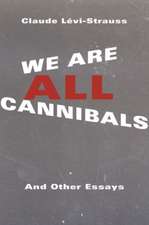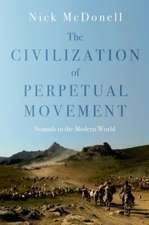Food Culture in Spain: Food Culture around the World
Autor F. Xavier Medina Ph.D.en Limba Engleză Hardback – 29 ian 2005 – vârsta până la 17 ani
Din seria Food Culture around the World
- 42%
 Preț: 250.59 lei
Preț: 250.59 lei - 42%
 Preț: 227.15 lei
Preț: 227.15 lei - 42%
 Preț: 261.04 lei
Preț: 261.04 lei - 42%
 Preț: 261.31 lei
Preț: 261.31 lei - 43%
 Preț: 258.85 lei
Preț: 258.85 lei - 42%
 Preț: 226.76 lei
Preț: 226.76 lei - 42%
 Preț: 244.92 lei
Preț: 244.92 lei - 42%
 Preț: 246.93 lei
Preț: 246.93 lei - 42%
 Preț: 245.70 lei
Preț: 245.70 lei - 42%
 Preț: 261.04 lei
Preț: 261.04 lei - 42%
 Preț: 236.38 lei
Preț: 236.38 lei - 42%
 Preț: 238.27 lei
Preț: 238.27 lei - 43%
 Preț: 268.65 lei
Preț: 268.65 lei - 42%
 Preț: 235.90 lei
Preț: 235.90 lei - 42%
 Preț: 236.74 lei
Preț: 236.74 lei - 42%
 Preț: 234.95 lei
Preț: 234.95 lei - 42%
 Preț: 226.11 lei
Preț: 226.11 lei - 42%
 Preț: 237.33 lei
Preț: 237.33 lei - 42%
 Preț: 238.27 lei
Preț: 238.27 lei
Preț: 245.13 lei
Preț vechi: 425.38 lei
-42% Nou
Puncte Express: 368
Preț estimativ în valută:
46.90€ • 49.10$ • 38.81£
46.90€ • 49.10$ • 38.81£
Carte tipărită la comandă
Livrare economică 05-19 aprilie
Preluare comenzi: 021 569.72.76
Specificații
ISBN-13: 9780313328190
ISBN-10: 0313328196
Pagini: 192
Dimensiuni: 156 x 235 x 20 mm
Greutate: 0.45 kg
Ediția:Parental Adviso.
Editura: Bloomsbury Publishing
Colecția Greenwood
Seria Food Culture around the World
Locul publicării:New York, United States
ISBN-10: 0313328196
Pagini: 192
Dimensiuni: 156 x 235 x 20 mm
Greutate: 0.45 kg
Ediția:Parental Adviso.
Editura: Bloomsbury Publishing
Colecția Greenwood
Seria Food Culture around the World
Locul publicării:New York, United States
Notă biografică
F. Xavier Medina is Senior Researcher in the Department of Mediterranean Cultures at the European Institute of the Mediterranean, Barcelona, Spain. He is also the president of the Spanish section of the International Commission on the Anthropology of Food and the general editor of the journal Anthropology of Food.
Cuprins
IntroductionTimelineHistorical OverviewMajor Foods and IngredientsCookingTypical Meals and Cuisine by RegionEating OutSpecial Occasions: Holidays, Celebrations and Religious RitualsDiet and HealthGlossaryResource GuideBibliography
Recenzii
[C]overs typical dishes and drinks, Spanish wines, the evolution of home and restaurant cooking, and more.
[P]rovides an overview of Spanish food and eating habits, taking into account the history and distinctive social, cultural, linguistic, geographical, political, and economic characteristics. Coverage includes the food culture in each region, how food practices and dishes in the Iberian Peninsula have developed over the centuries, and descriptions of typical dishes and drinks, especially Spanish wines, with many accompanying recipes. Other topics include typical meals, eating out, special occasions, and diet and health.
Spanish food culture has evolved around strong regional cuisines and representative elements. This volume offers an overview of Spanish food and eating habits, taking into account a long and complex history, plus distinctive social, cultural, linguistic, geographic, political, and economic characteristics. Spain's location at the crossroads of Europe and North Africa has made it a gastronomic melting pot, with Arab influences and New World ingredients particularly noted. Readers will learn about the unique food culture in each region and how food practices and dishes in the Iberian Peninsula have developed over the centuries. Typical dishes and drinks, especially the Spanish wines, are described in context, with many accompanying recipes.
Students taking cooking classes will enjoy this, as well as students looking for up-to-date information on Spain as they are researching in geography classes. Highly recommended.
Appropriate to high school, public and academic libraries.
[P]rovides an overview of Spanish food and eating habits, taking into account the history and distinctive social, cultural, linguistic, geographical, political, and economic characteristics. Coverage includes the food culture in each region, how food practices and dishes in the Iberian Peninsula have developed over the centuries, and descriptions of typical dishes and drinks, especially Spanish wines, with many accompanying recipes. Other topics include typical meals, eating out, special occasions, and diet and health.
Spanish food culture has evolved around strong regional cuisines and representative elements. This volume offers an overview of Spanish food and eating habits, taking into account a long and complex history, plus distinctive social, cultural, linguistic, geographic, political, and economic characteristics. Spain's location at the crossroads of Europe and North Africa has made it a gastronomic melting pot, with Arab influences and New World ingredients particularly noted. Readers will learn about the unique food culture in each region and how food practices and dishes in the Iberian Peninsula have developed over the centuries. Typical dishes and drinks, especially the Spanish wines, are described in context, with many accompanying recipes.
Students taking cooking classes will enjoy this, as well as students looking for up-to-date information on Spain as they are researching in geography classes. Highly recommended.
Appropriate to high school, public and academic libraries.












